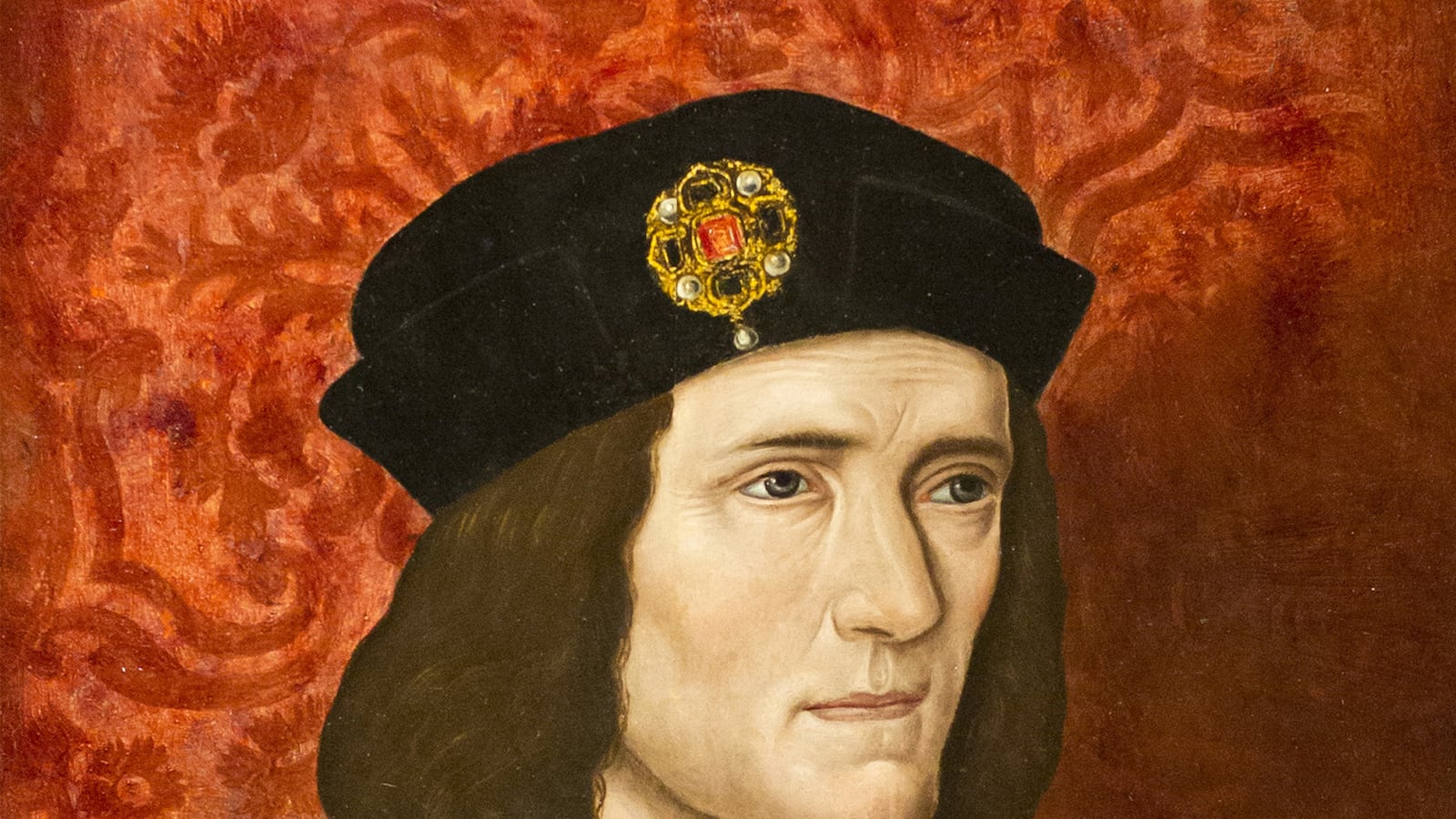Grand battles, vast excess, lopping women’s heads off on a whim: the Tudors were among the most salacious monarchs in British history, with their string of scandals enough to make a tabloid blush. But, more than 400 years after their reign ended, new evidence implies those riotous royals may never have had a claim to the throne at all.
Scientists studying the DNA of Richard III—the king whose remains were found under a parking lot in northern England two years ago—today revealed that a break had occurred within the male line of his genetic make-up. Analyses of his Y-chromosome halotypes found the remains had material that did not match with that of five living male relatives, meaning that the monarch’s birth was most likely the result of infidelity. "The lack of any match for the Y-chromosome lineage is quite curious and suggests an intriguing new avenue for dynastic DNA studies," population geneticist Professor Martin Richards told the BBC. Genes passed down through the maternal side, though, were found to be a “perfect mitochondrial match.”
That the remains are those of the last Plantagenet king are not thought to be in question, with the team behind the research citing the probability of this as being greater than 99 percent—something of a breakthrough after two years spent analyzing the bones discovered in his final resting place. Leicester University’s Dr. Turi King, who led the study, confirmed: “Even with our highly conservative analysis, the evidence is overwhelming that these are indeed the remains of King Richard III, thereby closing an over 500 year old missing person’s case.”
Previous research by Dr. King stipulates that a 1-2 percent rate of “false paternity” occurred within each generation of royals, making it entirely plausible that Richard III or his ancestors may have never known their biological fathers. And while the thought of illegitimate medieval baby daddies feels somewhat scandalous, genealogical information suggests that there were in fact two male heirs born out of wedlock between John of Gaunt (1340) and Henry Somerset, 5th Duke of Beaufort (1803). The latter’s living relatives were found to have a fairly common type of Y chromosome that differed from that found in the parking lot’s remains, calling the royal lineage of Richard III—and perhaps the entire Tudor dynasty—into question.
“If there's one particular link that has more significance than any other, it has to be the link between Edward III and his son John of Gaunt,” revealed genealogy specialist Professor Kevin Schurer. "Hypothetically speaking, if John of Gaunt wasn't Edward III's son, it would have meant that (his son) Henry IV had no legitimate claim to the throne, nor Henry V, nor Henry VI."
But he adds that “this is not a criminal investigation” as the Tudors took to the throne following the Battle of Bosworth Field in 1485, not as a result of having royal blood. The only way to track where the male line became broken would be to exhume a large number of bodies, which the team behind the study say is not going to happen.
The news has come as a somewhat ironic addition to Richard III’s exploits given that he was famed for discrediting his brother Edward IV’s marriage and labelling his two nephews as illegitimate. He was later labelled as ordering the murder of his brother’s sons in an apparent bid to back up his claim.
New research into genes pertaining to Richard III’s hair and eye color has shed greater light on the monarch’s appearance, with scientists ascertaining that the controversial royal was likely to have been blue-eyed and blond haired. This new information bears only a partial similarity to his appearance in an early portrait, where his hair is depicted as being dark.
This latest discovery into the purportedly shaky foundations upon which the Tudors’ reign was built has prompted questions into whether or not Britain’s current monarch, Elizabeth II of Windsor, could have become queen on spurious biological grounds. Professor Schurer was quick to dispel this theory, however, insisting that the team was “not in any way indicating that Her Majesty should not be on the throne.”





